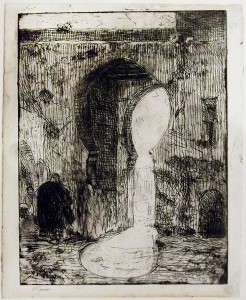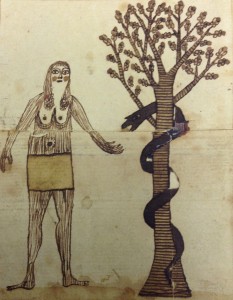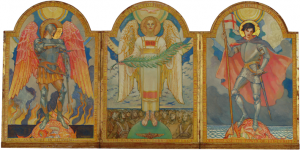 The Delaware Public Humanities Institute invites you to preview its fellows’ research topics below.
The Delaware Public Humanities Institute invites you to preview its fellows’ research topics below.
Halina Adams, Moving Houses: Revolution, Revels, and Mobile Homes in the Romantic Caribbean
Christopher Chenier, Professionalization of American Advertising Photography 1930s to 1960s
Katrina E. Greene, Pathways to the Press in an Anglo-American Artists’ Colony in France
Anisha Gupta, Conservation Education: Public Engagement through Collaboration
Lily Higgins, Storied Symbols: Reconciling Heaven and Earth in Early American Art
Jacinta Johnson, Sign Your Name on the Dotted Line (But Use the Right Ink!)
Pamela Johnson, Out of the Labs and into the Light: Public Outreach in Paintings Conservation
Alexandra Nichols, Engaging the Public in the Conservation of Contemporary Art
Jeff Richmond-Moll, “There Is Created an Altar – A Church”: Violet Oakley’s Wartime Altarpieces
Christian Roden, Things That Go
Ashley Rye, Glass and Gender in Charles Frederick Ulrich’s Glass Blowers of Murano
Brian Wagner, An American Workwear Study: Materialized narratives, ideals, and values
Jane Wessel, Extra-Illustrating Performance: The Actor-Playwright and Authorship Onstage
Halina Adams
Department of English
Moving Houses: Revolution, Revels, and Mobile Homes in the Romantic Caribbean
Colorful and eye-catching, Isaac Bellisario’s popular series Sketches of Character (1837-38) features an image of a black man dressed in a sixteenth-century French wig and costume, holding a house on his head as he dances. This image, entitled, “Jawbone, or House John-Canoe” depicts the carnival-like parade, Jonkonnu, held on several Caribbean islands. Though Bellisario’s image reflects contemporary racist attitudes, the “John-Canoe” piece captures the vitality and mobility of the parade and points to the importance of architecture in the festival and in the early nineteenth-century Caribbean and circum-Atlantic cultural imagination. Adams’s project examines depictions of plantations and slave homes in Romantic texts and images. She draws on materials from the print, material, and visual culture depicting the Romantic Caribbean, including Bellisario’s Sketches; images by William Berryman (1808-1816); Leonora Sansay’s A Secret History, or The Horrors of St. Domingo (1808); and Matthew Lewis’s Journal of a West India Proprietor (1815, 1833), in order to recover Romantic attitudes towards Caribbean architecture. From the Haitian Revolution (1791-1804) to the Jamaican Baptist War (1831), European buildings in the Caribbean were subject to reprisals during slave revolutions and uprisings. Writers imagined Caribbean architecture as both a symbol of colonial power and as evidence of their own tenuous control over West India and the bodies of the Other. Adams juxtaposes these depictions with others that imagine slave homes as dangerously mobile, capable of sinking into and emerging from the hostile natural environment.
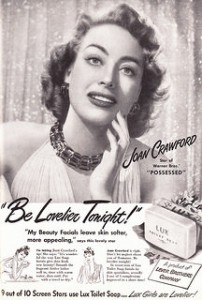 Christopher Chenier
Christopher Chenier
Department of History
Professionalization of American Advertising Photography 1930s to 1960s
Christopher Chenier’s doctoral research studies how midway through the twentieth century photography replaced hand artwork as the primary method of advertising illustration in American print capitalism. Innovations in mass printing made photographs faster and cheaper to make than ever before. At the same time commercial photography entered a golden age of profitability and popularity. Aggressive marketing by Kodak and other firms fostered the expansion of photography into every corner of print culture. Professional organizations sprouted across the graphic arts, grew in influence and scale, and established new training programs and schools across the country. Amateur photography became a pastime open to all, and a sharp rise in the number and fame of commercial photographers gave aspiring shutterbugs something to reach for. Hip, bohemian “top photographers,” Richard Avedon and Bert Stern for instance, became prototypes of uninhibited masculine vitality, idolized by aspiring fashion photographers.
Chenier’s summer research will focus on the professionalization of American advertising photography between the 1930s and 1960s. Through it, he will begin to historicize the rise of a professional consciousness among commercial photographers and document the concurrent emergence of the heroic “top photographer”: an independent artist working for commerce. Prior to this moment photographers were employed directly by advertising agencies as technicians and camera operators, their labor subordinated to the demands of art directors and their clients in industry. As the structure of the commercial photographic industry changed and commercial photography became an increasingly popular career path for photo enthusiasts, photographers deliberately reconfigured the field in a bid for control over the conditions and products of their labor.
Heather Gerling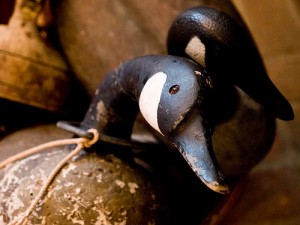
Center for Historic Architecture and Design
Decoding Decoys: Understanding the Continuing Tradition of Decoy Carving in the Chesapeake Bay Region, 1974-2014
The practice of making duck decoys is a living cultural tradition in the town of North East, Maryland. Because duck was one of the main food sources in the area through the early twentieth century, decoys have a rich heritage in the upper Chesapeake region. As the need for hunting water fowl has ended, the practice of making fowl decoys has evolved from simple hunting accessories to a collectible art form. It is now common practice for carvers to create decoys for use only as decoration. Gerling’s goal is to answer the question, “How is this tradition being kept alive by a particular group of carvers in North East?”
To answer this question, Gerling will conduct interviews with and videotape carvers as they discuss how they started carving, who taught them, and why making decoys is still a part of Upper Bay culture. She will create a 20-30 minute documentary from these materials, which will be shown to the public during The Upper Shore Decoy Show in North East, MD, on October 18, 2014. She will also help create a new exhibit at the Upper Bay Museum that will showcase the decoys made by contemporary carvers.
Katrina E. Greene
Department of Art History
Pathways to the Press in an Anglo-American Artists’ Colony in France
Little studied by artists trained in the academic system, the etching process was reclaimed and reinterpreted by nineteenth-century painters and intellectuals who advocated for printmaking as a creative art form at a time when printing processes were strongly tied to mass reproduction and commerce. Known as the etching revival or the painter-printmaking movement, this resurgence of interest in fine art printmaking had an international reach, drawing together artists and collectors from France, Great Britain, and the United States in large numbers.
Self-proclaimed painter-printmakers huddled together in shared studio spaces to pull their first experimental proofs and staged exhibitions of the most promising results. Uncovering the origins of a small group of etchings and lithographs made by African-American artist Henry Ossawa Tanner (1859-1937) introduced Greene to a vibrant community of Anglo-American painters and printmakers who established a colony centered on the twin French towns of Étaples and Trépied. The most skilled and best equipped of these artists, hailing from Great Britain, Australia, and the United States, likely encouraged Tanner to experiment with etching in the years prior to World War I. As a site of artistic exchange at a pivotal historical moment, the colony merits further investigation. This summer, Greene will use surviving artworks and archival materials to generate a detailed map of this colony’s printmaking network, noting sites such as artists’ residences, studios, suppliers of etching materials, and sketching locations. The resulting diagram of the community will decode the complex interrelationships between the residents before global conflict dissolved their ties.
Anisha Gupta
Winterthur/University of Delaware Program in Art Conservation (WUDPAC)
Conservation Education: Public Engagement through Collaboration
This summer, Anisha Gupta will complete an internship at the Cleveland Museum of Art (CMA). Her internship will serve as ongoing education and practical experience in the paper conservation lab with a specialization in the Indian and Southeast Asian collections, where the need is great for works to be stabilized and preserved. This collection features over 100 paintings that are considered among the finest examples from the Imperial Mughal and Deccan courts, including a Jain Kalpa Sutra, a Life of Christ manuscript, and a Tuti Nama.
Care of this collection will require collaboration with the curator, Dr. Sonya Quintanilla, who has particular expertise, including technical understanding, with manuscripts. Much of the stabilization of this collection will include the consolidation of flaking paint and challenging tear repair. In her internship, Gupta will also collaborate with Dr. Deepak Sarma, Professor of Religious Studies at Case Western University, on potential conservation treatment of a rare Jain manuscript called a Kalpa Sutra. Sarma is very interested in the history of this manuscript and conservation of this work is necessary before it goes on display in the CMA’s newly-renovated galleries. Gupta hopes to arrange opportunities to share these experiences with the public through blog posts and interaction in a gallery space dedicated to visible conservation work.
Lily Higgins
Winterthur Program in American Material Culture (WPAMC)
Storied Symbols: Reconciling Heaven and Earth in Early American Art
It is easy to dismiss early American Protestants as a dour lot that eschewed the physical world for the life of the mind, but seventeenth-century colonists were intensely aware of the significance of material objects. Through obsessive mediation between the heavenly world and daily existence, early American settlers struggled to tease enduring spiritual truth from everyday interactions. Rooted in a tradition of Protestant iconoclasm, many colonists were suspicious of religious imagery, but they relied on a form of visual shorthand known as allegory to locate their experiences inside a continuing scriptural narrative.
A toy book in the Winterthur Museum’s collection is a telling example of how Protestant settlers mediated their fears and desires through imagery, using visual allegory as a didactic tool and cultural touchstone. Copied from a seventeenth-century printed source titled The Beginning, Progress, and End of Man, this interactive booklet unfolds in both images and words. As the reader lifts flaps of paper, the illustrations transform, linking the story of mankind’s fall from grace with a warning against vanity and earthly temptation.
By studying educational primers, maps, gravestones, ecclesiastical silver, portraits, and printed broadsides, Higgins explores how allegorical imagery evolved in America to meet the challenges of a new cultural frontier. Rooted in antiquity, the stories contained in these once evocative symbols have become obscure. Higgins seeks to understand how Protestant colonists engaged with the material world actively and intentionally, re-imagining an established visual canon to face the spiritual and physical demands of the New World. Image: Chapman, John. Illustration of Eve and the tree of knowledge. Manuscript toy book. 1808. Winterthur Library: Joseph Downs Collection of Manuscripts & Printed Ephemera.
Jacinta Johnson
Winterthur/University of Delaware Program in Art Conservation
Sign Your Name on the Dotted Line (But Use the Right Ink!)
Jacinta Johnson will be interning at the Conservation Center for Art and Historic Artifacts (CCAHA) in Philadelphia, PA during the summer of 2014. The focus of her internship will be the treatment of eighty primary resource documents from the Pennsylvania State Archives. All the documents are in poor physical condition and are degrading from ink corrosion. The first treatment will be on thirty ship’s passenger lists of Germans arriving at the Port of Philadelphia between 1727 and 1808. The documents contain signatures or marks of the individuals immigrating as well as date of arrival, port of embarkation, and the name of the vessel and its captain. The second treatment will be on fifty original applications for land acquired in the New Purchase of 1768. The information in these applications includes the date, applicant name, number of acres, and a description of the location of the tract. The documents are of great importance to researchers, especially genealogists, and many of the lists have already been digitized and published due to their high use. During this internship, Johnson hopes to create a short video featuring the treatment of one of the works. This video will contribute to CCAHA’s library of outreach videos used by cultural institutions. She also plans to write a technical bulletin addressing a conservation issue for collectors of family artifacts. The goal of this bulletin is to educate collectors so that they can make informed decisions about the long-term care of their collection.
Pamela Johnson
Winterthur/University of Delaware Program in Art Conservation
Out of the Labs and into the Light: Public Outreach in Paintings Conservation
By nature of the work, conservation tends to be a behind-the-scenes discipline, practiced in back rooms away from the public eye. This profession, however, is at the heart of material culture, its longevity and its potential to tell our story. It is the conservator’s duty not only to protect objects but also to foster understanding among a wide audience as to how the meaning of art and its physical presence function together to preserve the art and artifacts at the center of human culture.
The Lunder Conservation Center, where Pamela Johnson will be completing an internship in paintings conservation this summer, brings conservation out of the back room and into view – literally. The Lunder features five conservation labs with floor-to-ceiling windows so that Museum visitors can view a typical day in an art conservation laboratory firsthand. In addition to providing a look into daily activities, the Lunder also features interactive kiosks, displays, and tours to further engage visitors.
While at the Lunder, Johnson will have the unique opportunity to study the life and works one of the early innovators of Modern Art, Marguerite Zorach, while working in a conservation lab dedicated to public outreach. Zorach was a Fauvist and Cubist painter and fiber artist, and she and her husband William played a vital role in American Modernism for over 50 years. Unfortunately, however, many of her works remain underrepresented in the literature. During her time at the Lunder, Johnson will combine her research about the Zorachs with the Lunder’s public outreach mission to bring both conservation and underrepresented artists into the light.
Craig Lee
Department of Art History
Letter Building: Signage, Supergraphics, and the Rise of the Semiotic Structure in Modern American Architecture
The proliferation of signage, overlooked but omnipresent artifacts of consumer society, was nowhere more vigorous or more transformational than in the United States during the twentieth century. The increase and prevalence of these physical structures of promotional display, with their eye-catching and over-sized lettering, greatly affected the urban built environment and challenged notions of architectural form. Lee investigates how outdoor advertising and commercial typography influenced architectural practice and discourse as letters on buildings gained greater prominence in modern American architecture. In particular, the project charts the development from an initial enmity towards the spread of monumental text in the cityscape, in the form, for example, of billboards, to gradual acceptance. With greater recognition of vernacular landscapes, by the 1970s, architects embraced structures conceived primarily as enormous words. Confronted with the present condition in which whole buildings are little more than colossal LED screens suitable for displaying words, images, and advertisements, this work places such contemporary development in an historical context and thematic study.
Alexandra Nichols
Winterthur/University of Delaware Program in Art Conservation
Engaging the Public in the Conservation of Contemporary Art
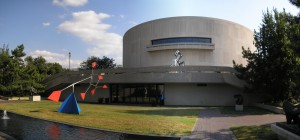
The preservation and care of contemporary art pose unique challenges to conservators in museums and private practice. An unparalleled number of materials are utilized in artworks in collections, and the long-term stability of many of these materials, such as plastics, is not fully understood. Often in conceptual art the artist may prefer that original components be replaced to continue to convey their original idea. Artworks using electronic media often depend on technology formats that have fallen out of use– imagine if a wedding video was only available on LaserDisc. Collaboration with living artists and proper documentation and research are key to determining the best course of action for maintaining these types of artworks.
This summer, Nichols will complete an internship at the Smithsonian’s Hirshhorn Museum and Sculpture Garden, where she will be conducting research on digital media in preparation for a video art exhibition to open in October. As part of this project, she will collaborate with artists and gallery owners to determine the display parameters for their recordings and discuss issues involving transfer to different formats. Nichols will also be assisting conservator Steven O’Banion (a former DELPHI fellow) in the museum’s Artist Interview Project, where living artists are interviewed to document the artists’ process and discuss how they intend their artworks to be cared for. Video clips and complete transcripts are published on the Hirshhorn’s website to provide the public with insight into the artists’ intent and methodology. In addition to leading tours of the Hirshhorn’s conservation labs, Nichols will be blogging about her experiences.works in collections, and the long-term stability of many of these materials, such as plastics, is not fully understood. Often in conceptual art the artist may prefer that original components be replaced to continue to convey their original idea. Artworks using electronic media often depend on technology formats that have fallen out of use– imagine if a wedding video was only available on LaserDisc. Collaboration with living artists and proper documentation and research are key to determining the best course of action for maintaining these types of artworks.
Jeff Richmond-Moll
Department of Art History
“There Is Created an Altar – A Church”: Violet Oakley’s Wartime Altarpieces
During World War II, the American artist continued her lifelong quest for peace by joining with the Citizens Committee for the Army & Navy to produce twenty-five portable altarpieces for American chaplains across the globe. Oakley’s altarpieces are an unexplored aspect of her career and also rich artifacts of American wartime culture. By often equating the war with an apocalyptic battle against the forces of spiritual darkness, Oakley’s altarpieces reflected a broader American tendency to elevate their nation’s cause to universal, even biblical, proportions. These portable triptychs allowed troops to erect makeshift churches anywhere: “whether in a steaming jungle, or on the rolling deck of a fighting ship, or in the back of a truck under the fire of guns,” the Citizens Committee wrote, “there is created an altar – a church.” Though rare within American Protestantism (and perhaps inconsistent with its emphasis on the incorporeal Word rather than the corporeal body of Christ), wartime altarpieces nevertheless developed a unique Protestant purpose. They were outward signs of God’s presence and promises in places where he otherwise seemed most absent, and they were said to provide “spiritual armor” that “shielded” soldiers’ souls against the dehumanizing nature of combat. By considering the range of Oakley’s wartime works and by comparing them to the nearly 400 other triptychs produced during the Citizens Committee’s campaign, Richmond-Moll’s project traces the sites and meanings of their display – from army bases, to airfields, to battleships around the world – and considers their distinctive place within American religious history. Image: The Angel of Victory Triptych, 1941,Violet Oakley, (1874‑1961)
Christian Roden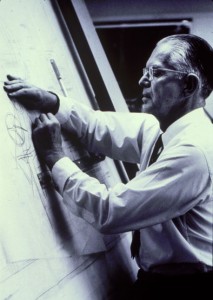
Winterthur Program in American Material Culture
Things That Go
For the first half of the twentieth century, the relationship between modernity and transportation was one primarily of aesthetics. For Henry Dreyfuss, one of the few industrial designers to work with multiple forms of transportation, modern design was a problem-solving tool to overcome the challenges in producing a satisfactorily engineered space. While he didn’t seek to reinvent the wheel from a technology standpoint, he used his interest in the fields of ergonomics and human factors of engineering to produce functional and appealing spaces that were easy to navigate, pleasant, and efficiently laid out. For this project, Christian Roden will explore the evolution of Dreyfuss’s scientific approach to the design of mass transportation for the New York Central Railroad and the American Export Line. Although human factors and industrial design may not seem an intuitive pairing, both concern themselves with the psychology of the human response and how it affects the interaction between people and the space they occupy. By using the Dreyfuss papers found at the Cooper-Hewitt Library and the Hagley Archives, Roden will explore the relationship between these ideas, contextualizing them as part of the wider twentieth-century drive to better understand the complex workings of the human mind and its effect on society. Dreyfuss may not have invented new technology, but his scientific approach embraced the modern spirit of the times better than a bold choice of paint color or fabric pattern would have.
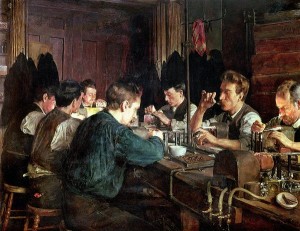 Ashley Rye
Ashley Rye
Department of Art History
Glass and Gender in Charles Frederick Ulrich’s Glass Blowers of Murano
Ashley Rye’s dissertation examines paintings of Venetian labor made by British and American artists in the last decades of the nineteenth century. In contrast to previous generations of artists who were more interested in Venice’s landmarks than its residents, late nineteenth-century artists were the first to devote significant attention to the Venetian people. Ashley’s dissertation argues that this phenomenon, which has received scant attention from art historians, was a fundamentally gendered one. In a series of case studies, she examines how paintings of Venetian men and women became vehicles for expressing ideas about modernity and sexuality both in Venice and in the artists’ home countries.
During the fellowship period, Ashley will study the gender dynamics at play in American artist Charles Frederick Ulrich’s painting Glass Blowers of Murano, which is held at the Metropolitan Museum in New York. This medium-sized oil painting depicts a group of Venetian men blowing glass in front of several young women. Although glassblowing and the Venetian glass industry were of particular interest to Anglo-American visitors to Venice, artists rarely depicted glassblowers—a position only available to male artisans. Ashley plans to closely analyze Glass Blowers of Murano as well as nineteenth-century Venetian glass objects like the ones that are depicted in the painting to determine whether the artwork’s critical and popular success can be traced to its portrayal of traditional gender roles and its favorable depiction of artisanal labor. Image: Charles Frederick Ulrich’s Glass Blowers of Murano (1886)
 Brian Wagner
Brian Wagner
Department of Art
An American Workwear Study: Materialized narratives, ideals, and values
How does one quantify the labor of another? What records do we have of that labor? What is labor in the 21st Century? In order to investigate these questions, Wagner will ask a group of workers to share with him their used work clothes—-the things they wear that serve as a daily record, a visual testament of their effort, energy, and working environment. This collection will shine light on their labor, using fabric as the narrator of the lives they lead, the fields they sow, or the meetings they attend. By drawing from the material beyond the mere product of that labor, the narrative of that worker and their labor surfaces. It is through this material, tied to the convictions of their daily routines, that some of the deeply rooted ideals and values of America surface. As a DELPHI fellow, Wagner will work to further explore these connections between the American worker, their workwear and the ideals they harbor. Investigating the aesthetics of the material itself will act to punctuate these connections and further narratives in and outside academe.
Jane Wessel
Department of English
Extra-Illustrating Performance: The Actor-Playwright and Authorship Onstage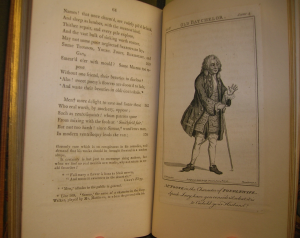
David Garrick, the most celebrated actor of the eighteenth century, worried about the ephemeral nature of his art. In a pre-video age, performance could not be wholly captured, and Garrick lamented that, “nor Pen nor Pencil can the Actor save, / The Art, and Artist, share one common Grave.” This summer, Wessel will work with one unusual form of media that attempted to reconstruct performance: extra-illustrated theatre books. Extra-illustration, which began in the eighteenth century, was the practice of adding relevant material to a favorite book. For instance, a Garrick fan might unbind his copy of Arthur Murphy’s The Life of David Garrick (1801) and insert engravings of Garrick in various roles, manuscript letters signed by Garrick, playbills, tickets, and newspaper reviews, before rebinding the book with these materials.
Wessel’s dissertation, which reconsiders the nature of dramatic authorship in the long eighteenth century, will use extra-illustrated theatre books at the Lewis Walpole Library and the Folger Shakespeare Library in order to argue that actor-playwrights redefined authorship as an activity that occurred not only on a printed page but also during a theatrical performance. Actor-playwrights, including Garrick, viewed playtexts as fluid and malleable documents. They altered lines during performance and modified the way they performed particular characters from one night to the next. Wessel argues that rather than resembling the post-romantic image of the “solitary genius” that we have today, dramatic authorship was highly collaborative, with actors and playwrights working together to create texts and characters.
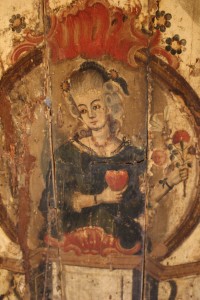 Rachel Zimmerman
Rachel Zimmerman
Department of Art History
Luxuries in Remote Places: The Material Culture of the Elite Home in Colonial Minas Gerais, Brazil
In 1690, large veins of gold were discovered in Minas Gerais, a previously unexplored region of the Portuguese colony of Brazil. The Portuguese king immediately issued a series of decrees to control the mineral wealth. These laws aimed to isolate the region, to restrict trade, and to curtail the purchasing power of local residents. However, wealthy mine owners circumvented these decrees in order to attain the luxuries and comforts associated with elite life. The abundance of gold and diamonds fueled a complex trade network connecting the remote hinterland with the rest of the world. Spanish American silver, Chinese silk and porcelain, Indian cotton, and a host of fabrics, furnishings and books from Europe reached the homes of Minas Gerais.
While eighteenth-century homes have not remained intact, post-mortem inventories provide a glimpse into the material culture of the past. Zimmerman’s research examines how wealthy inhabitants of Minas Gerais participated in international fashions for collecting and displaying luxuries in their homes and on their bodies. As the source of remarkable wealth, Minas Gerais funded local and global trade and facilitated Portuguese exploration and colonization. Yet Minas Gerais was also peripheral, far from Lisbon and even from established cultural centers within Brazil. Zimmerman is interested in how objects create tangible connections to the rest of the world. This summer, Zimmerman will explore eighteenth-century decorative art from Asia, Europe and the Americas and will read travel accounts and Portuguese eighteenth-century publications on trade, distant lands, and luxury goods.

